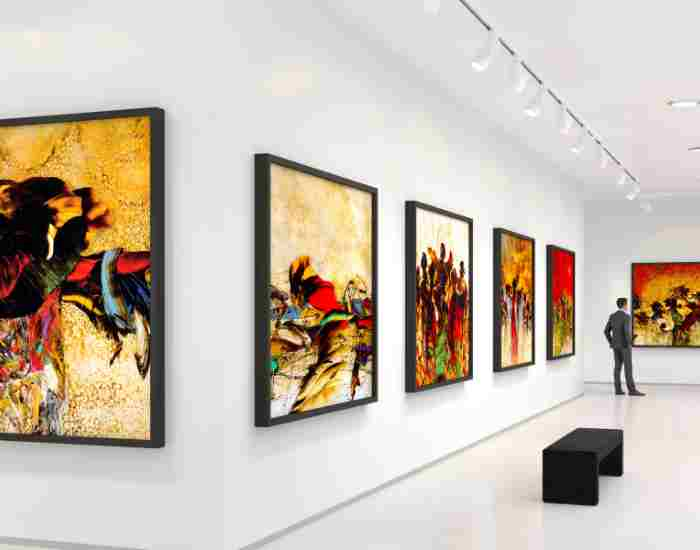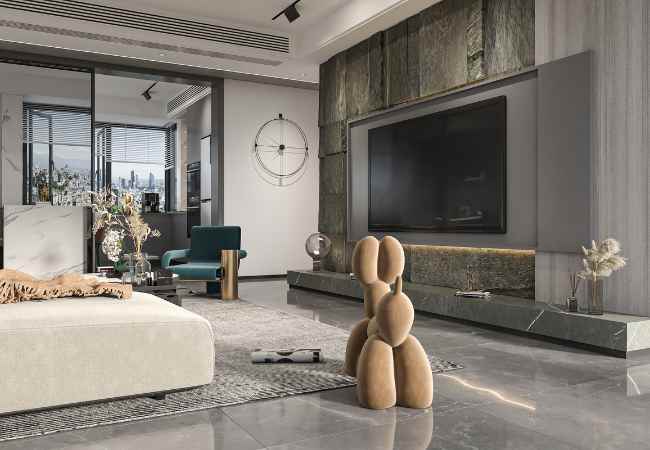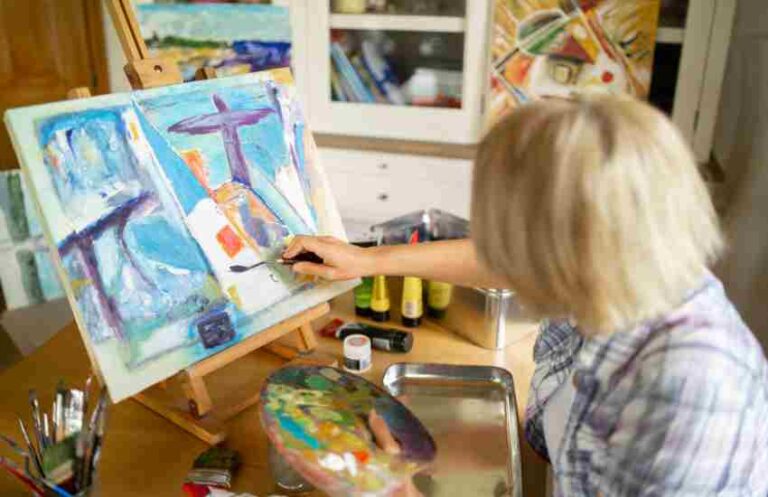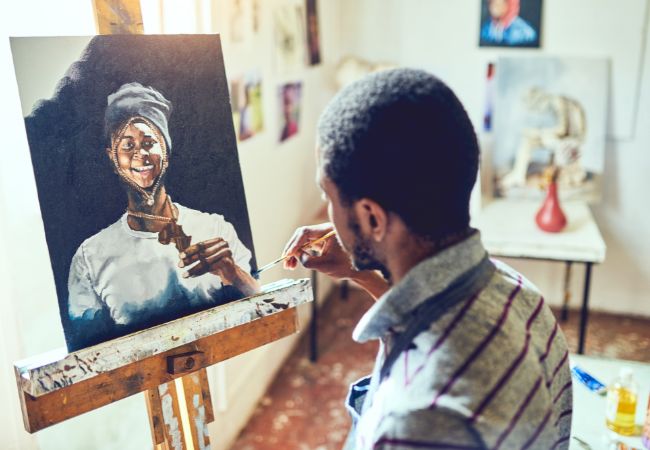Have you given much thought to how much music, tv and film popular culture affects your design decisions these days? It certainly is eye-catching, to say the least. Popular culture quite evidently permeates all facets of design with its unceasing shifts and landmark occurrences. This entails that the music one listens to, the films or television one watches and even the social media one uses shapes any and all aspects of our lives, starting from the clothes we wear to the design of our homes. While watching a popular series like Stranger Things, I always find myself yearning for the over-the-top decor of the 80s. The bold hues, old-fashioned styles, and even the typography—these things aren’t merely for decoration; they ignite trends in contemporary design that we notice everywhere – on Instagram posts and fashion shows. The convergence of leisure, social media and design that we’re living through today is pretty unusual and highly influential. In this installment, we will investigate the development of design trends through the years, the ways in which music has shaped graphic design and fashion as well as real-time trends created by sites such as TikTok and Instagram. So, pour yourself a cool beverage and let’s take a trip through popular culture intertwined with the world of design!

The Evolution of Design in Pop Culture
From the 80s to Now
Ah, the ’80s! I can remember that time when the design landscape was filled with absurd design styles ranging from unique wallpapers to neon shades and vibrant prints. I can only imagine the sheer level of craziness that the ’80s were as they were the complete polar opposite of minimalism.
Remembering those photo albums of your parents, doesn’t it inspire you to mix nostalgia with modern whirls like styling your bedroom with bright pop color paintings of classic video games or cassette tapes? Decor showcasing such insane designs are starting to emerge in the current decade while brands and designers constantly continue updating their archives to fit and pull out long forgotten styles.
In short, there is a complete amalgamation of new and old styles which not only the young designers or brands are pulling off but the ones who experienced that phase in the ’80s are equally coming up with fresh and creative designs.
Design & Music Influences
As much as fashion is now infused with trending genres of music, it goes without saying that the music of choice heavily impacts graphic design as well. In the words of Leandra Medine, music trends drives design.
As an avid consumer of fashion, who can forget those electrifying visuals that make music videos pop out, such as the multi colored graphics in Beyoncé’s Formation videos.
There is a reason why great performers such as Beyonc endorse certain graphic designers and brands: because it gives an aura to the song, an edge, and encourages countless other designers to use the same color schemes and themes.
And It is true that great music videos shape new launching pads for graphic designers, take fashion and lifestyle collaborations for instance. And the Collaborations between Kanye West and Adidas are a great example of how fashion culture of sneakers was revitalized and how a musicians idea can single handedly revolutionize a design aesthetic.
As We can see that Music and design heavily influence each other and that synergy leads to something unique all in aid of carrying/ defending a cultural movement, Music – simply put is design for the ‘ears’ .
The Essence of Social Media Evolution of Design
As much as we’ve covered the profound change: social media is, I believe social media is the new black.
Instagram and TikTok have revolutionized the method by which trends are created by giving influencers and designers the opportunity to market their concepts on a global basis.
Now we can appreciate the fact that the diffusion of trends into the design sphere can take quite a long time so that it can be translated into a design.
Challenge trends that can easily go viral are faster then trends that can last more then a week.
Take for instance the global issue that surreptitiously connects us – #TheDress.
That discussion about if that dress is black with blue stripes or white and gold stirred internet and thought about color design in a totally different way.
Social media doesn’t just create trends but helps the designer connect to the consumers directly.
The design world is abundant with influencers who update us with the latest trends from a minimalist to the eclectic style, sharing their creative stories and inspiring others.
Scrolling through Instagram, I often meet new designers whose works are so inspiring to me that I would love to implement this in my own design.
This kind of access to creativity helps to create an active society of lie lovers and designers and expands the definition of the word design.
Key Features Shaped by Pop Culture
Color Palettes
One startling fact is the extent to which color will always remain as a strong influence of pop culture.
Consider the warm colors that are always present in the movies or TV shows that you adore.
For instance, let us take the show Euphoria, Euphoria is a renowned series that features a range of strong neon and pastel colors and creates a sensual atmosphere for its characters. This visual feast alongside the emotional settings led to brands and designers such as clothing and cosmetic lines to acquire
I have seen this pattern in my own work. One of the observations Which excite me are those bright, saturated hues which evoke emotions.
Another great example is the resurgence of 90s aesthetics, fueled by nostalgia. Movies like Clueless and shows like Friends have inspired a more pastel and muted approach that was much coveted in that era.
Such palettes are not merely evocative of times gone by; they have feelings that millions identify with and thus are able to target easily remarkable branding strategies.
I have always combined modern color palettes with retro ingredients in my non-commercial work, and I see it as a distinct piece of storytelling.
Typography Trends
When discussing the impact of pop culture, typography is yet another field where it fared remarkably well.
There seems to be a distinct revival of vintage typography designs over the last few years, especially those that take cues from the retro brands of the 70’s and 80’s.
It’s so amazing how these fonts can seem like they’ve been around forever yet still feel contemporary!
Very few brands have taken this trend seriously, but Coca-Cola has taken the lead by using their script typeface in advertisements that attempt to tap into the brands history.
This profound strategy not only strengthens their existing market but also draws in the technology-savvy and nostalgic millennial crowd.
Just as well, many products of modern brands have also adopted retro serif typography for most of their design works.
Look at Apple’s recent advertisements for its new products that were launched—everything looks perfectly branded with attributes of modernism combined with the old-fashioned typographical elements.
From this, it appears that they are saying: “We know where we have come from but at the same time, we know where we want to go.”
As a designer, Typographic composition is something I take delight in, as it gives me an opportunity to undertake plunges into new styles and blend up centuries of style into one form.
Visual Storytelling
Alright, let’s take on visual storytelling, and in this case where for me one of the most inspiring elements of popular culture in its affect on design is illustration.
Just as we have many commercials about movies and films, the stories told in those films, series and songs become the story of the brand thereby making that brand more appealing.
For example, Nike has, within its promotions, made us of pop culture in their advertisements.
I assume you remember their commercials in which numerous athletes and sports professionals from different cultures and nationalities were presented with the phrase the” Just Do It” slogan.
By depicting real stories and real problems, they build a storyline which helps to sell the goods, but even more importantly provides a stronger connection with people.
The reason this method works is it is based on what people have experienced in life together and the emotions they felt so that the brand becomes more trustworthy.
There’s a story I remember about an IKEA ad, in which the brand artfully reeled in pop culture clichés into their promotions.
To promote one of their couches, they dressed the314 in power pop culture icons such as “During this time ‘fake’ always ‘safe’ for Their realistic gas, wheels, fake horses and classic shock values set to stir up a rage during a family reunion.
This smart combination enhanced the ads into captivating anecdotes which ushered in discussions, proving how storytelling flows from good design.
As a creative person, I view stories whether in pop culture or in my life, that helps me make design and touches people.
FAQs
How does pop culture influence design?
Pop culture is good as a society does not have creativity and it is a very important part of design, this cannot be undermined.
From our findings in examining the Tadeo, it has been shown that there is great demand in music, television and now social media personalities.
After the launch of a successful film, there is a noticeable increase in the supply of film themed clothing and accessories, as well as decorations for the home and other items.
When Black Panther came out, I was struck by the bold hues and cultural emblems that were used in the movie. It influenced the graphic and fashion design adoration of African aesthetic.
Companies were fast to seize the opportunity and come up with the new product designs that were in style. The end result was an increase in sales and an emotional connection with the audience’s sentiments.
Writers and their audiences are impacted by pop culture and social trends. Audience members of designers and writers, on the other, are influenced by pop culture social trends. Because of the intersection between designers/writers and their audiences, pop culture, as any other form, needs to be followed closely.
How can designers remain in touch with pop culture?
The reality is that one consuming pop culture finds it to be a foreign trend, but the vastness of its reach makes it much easier.
One technical detail worth mentioning is the engagement with diverse media.
Follow social media profiles that echo your design, watch popular series, and listen to the latest music hits.
There’s also an endless amount of content looking on TikTok or Instagram for finding ideas.
I constantly browse through design-account and explore pop culture hashtags.
This is a great source of inspiration – a great source to preempt emerging trends, trends coming in the foreseeable future.
Another good strategy is to talk with all creators loosely related to your area.
Get involved in art forums or local groups to exchange ideas and make conversations about trends.
Such interactions can be tremendously inspiring and help you stay truly in touch with the very heart of the design realm.
Are there risks in falling upon pop culture for inspiration during the design process?
Sure, it is possible to find great inspiration in pop culture, but there are some concerns regarding it.
For one, trends are guaranteed to have a very short lifespan.
What’s in fashion right now can easily become “out” the next, forcing a designer to play catch up of sorts.
Hello, Twitter. I have this meme which is very trending. I have a drawing book — the other day people would glee this kind of art, now they won’t.
As a designer, you should make sure not to use any of these short-lived fads too much as soon after your project is finished it is likely the design will already be considered overused or outdated.
Also, there is a threat of cultural appropriation.
Media consumers can (rightly) feel alienated if designers take in elements from a culture simply because they need to use it without fully understanding.
One should be extremely careful, respectful and authentic of these designs to avoid conveying a short story hinting to the audience that the design is simply another one of the latest trends.
Are design trends in different cultures than one another?
Countries have different pop culture and that change serves to further reinforce design trends: indigenous cultural differences, which is a positive thing.
To illustrate, the simplistic approach to design which we see in Scandinavian countries illustrates their belief in form following purpose or function.
In regions like India or Mexico, where a unique history forms a fertile ground for a rich culture, architectural and art styles are influenced and evolved by the traditional inner workings.
Local pop culture has this incredible capacity of influencing design, and I have always found it enthralling.
In Japan, I have seen how the animation influenced design merged into the traditional visual culture to form a distinct and easy-to-choreograph language encourages the designer’s creative inspirations.
This intertwining allows designers to broaden their horizons and enhance their work through a plethora of cultural touches around the world.
Conclusion
When the subject of the talk is ending as we have explored some facets of how pop cultures shapes design, it is quite a strong tie that these two things really go hand in hand.
There exists a bi-directional relationship between the worlds of design and that of pop culture in a way in which pop culture not only determines purchasing decisions but also serves as a source of design inspiration.
This influence can be very exciting and when embraced by designers can yield work that is truly visually beautiful and that which also resonates with the society around them.
You should try soaking into pop culture while watching shows, scrolling through social media or listening to music if designing is something you’re interested in and allow that to guide you through your creative process.
Don’t hesitate to share your narrative revolving pop culture inspired design as culture is an exquisite fabric of designing and every story we create wove through design.
What custom trends have you noticed? Do share how your work has been shaped by your surrounding media and culture.
There is always space for more insights. Now tell me, what are your thoughts?






